Can Anyone get a Chemical Peel?
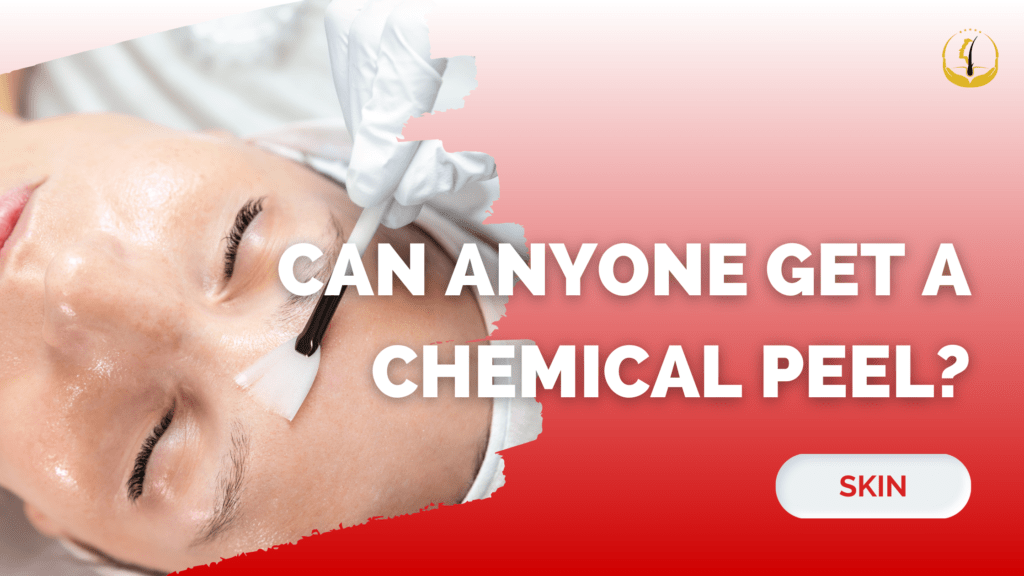
With ever evolving technology and development in scientific fields, many options are now available to achieve youthful glow for your skin. From plastic surgical procedures to simple Chemical Peel or Skin Peel treatment, now you have various options to remove wrinkles and get rid of those old, dead skin cells. Skin rejuvenation helps to boost morale and lift your spirits. When our body gets exposed to the sunrays, our skin’s outer layers get damaged and dead skin cells remain stuck to our body. This mostly happens due to the dirt particles that remain embedded in the pores. So, with constant aging our skin starts looking more dull and lifeless. Freckles, acne scars and other similar skin blemishes add misery to your beauty. If you’re afraid to have a surgical procedure or dont have much budget for a procedure like plastic surgery and face lift then chemical peel is definitely one of the best options for you. Depending on your skin type and personal need, you can choose from 3 basic types of chemical peel treatment. Skin peel treatment is a procedure in which the damaged outer layers and dead skin cells of your skin will be removed. Skin peel treatment is also known as chemical peel because different types of chemical solutions are used in this procedure to smoothen or even out the skin texture. The term chemical peel is used because the chemical applied causes the dead damaged skin to peel off. Done on the Face, Neck or Hands Skin peel treatment is usually. Removal of the damaged outer layers of the skin helps to enhance your overall look. Skin peel treatment is recommended and applicable for people who have facial scars caused by pimple/acne, those who have wrinkles and uneven skin tones, and for those who are just looking forward to improving their skin texture. After the Skin peel treatment you may experience a bit of redness of the skin and then scaling happens which is followed by peeling. The strength of the treatment determines the number of days the skin will peel. You need to avoid direct sunlight for a few days after the Skin peel treatment. Visit the best cosmetic surgery clinic, GLOJAS that can offer favorable results in chemical peel treatment. We suggest that you get a FREE consultation with one of GLOJAS Doctors who are experts in their field to identify the right treatment you need to achieve your goals.
Hair Transplant Malaysia Safe Or Not?

Are you considering a hair transplant in Malaysia to address hair loss? It’s a significant decision, and like any medical procedure, it comes with its share of questions about safety and effectiveness. Malaysia boasts a growing reputation for healthcare, including advanced hair restoration techniques. This blog delves into whether hair transplants in Malaysia are safe, helping you make an informed decision. We’ll cover the types of procedures available, safety measures, and insights from experts in the field. Hair Transplant Safety in Malaysia Overview of hair transplant procedures in Malaysia Hair transplant procedures in Malaysia have gained popularity due to advanced technologies and skilled surgeons. Common techniques include Follicular Unit Extraction (FUE) and Follicular Unit Transplantation (FUT). FUE involves individual hair follicle extraction, whereas FUT requires removing a strip of scalp. Each method has its advantages, tailored to meet various hair loss patterns and preferences. Malaysian clinics offer state-of-the-art facilities, with most adhering to international standards to ensure safety and effectiveness. Factors determining the safety of hair transplant surgeries in Malaysia The safety of hair transplant surgeries in Malaysia is largely influenced by several critical factors: Qualifications of the Surgeon: Certified and experienced surgeons are crucial for a successful and safe procedure. Clinic’s Reputation and Standards: Facilities should follow stringent health and safety protocols. Technology Used: Advanced technology can lead to more precise and less invasive procedures. Aftercare Services: Proper post-operative care is essential to avoid complications and ensure the longevity of the transplant results. Understanding the Risks: Hair Transplant Malaysia Safe or Not How dangerous are hair transplant? Hair transplant surgeries are generally considered safe when conducted by qualified healthcare providers. However, as with any medical procedure, they carry inherent risks. These risks include infections, bleeding, scarring, and unnatural-looking hair growth. Ensuring that the procedure is performed in a reputable facility by an experienced surgeon substantially minimizes these risks. Patients are also advised to follow all aftercare instructions for optimal healing and results. Discussion on the risks associated with unreliable hair transplant clinics Choosing the wrong transplant clinic can significantly increase the risks associated with hair transplant surgeries. Unreliable clinics may: Lack proper sterilization techniques, increasing infection risks. Use outdated or improper equipment, leading to poor results or complications. Employ inexperienced staff who might not correctly assess individual hair loss conditions or execute the procedure safely. It is vital for potential patients to thoroughly research and choose clinics with proven track records of successful and safe procedures. Always consult with multiple clinics, read patient reviews, and verify surgeon credentials and clinic certifications before deciding. Choosing the Right Clinic: Hair Transplant Malaysia Safe or Not? Choosing the right clinic for a hair transplant in Malaysia is crucial for ensuring the safety and success of the procedure. Various factors play an essential role in determining the best clinic for your needs. Factors to consider when selecting the best hair transplant clinic in Malaysia When looking for a hair transplant clinic in Malaysia, several factors should guide your decision: Accreditation and Certification: Check if the clinic is accredited by local healthcare authorities and if the doctors are certified in dermatology or hair restoration surgery. Experience and Expertise: Choose a clinic whose doctors have extensive experience and proven expertise in performing hair transplants. Technology and Techniques: Opt for clinics that use state-of-the-art technology and the latest techniques. These include Follicular Unit Transplantation (FUT) and Follicular Unit Extraction (FUE). Before and After Gallery: Review the clinic’s before and after pictures to assess the outcomes and compare them with your expectations. Consultation: A good clinic will offer a detailed consultation to address your concerns, assess hair loss, and provide a personalized treatment plan. Reviews and recommendations for reputable hair transplant clinics in Malaysia Choosing a reputable clinic is easier when you have access to reviews and recommendations. Patients generally leave reviews on the clinic’s website, social media platforms, and health forums. Look for clinics with high ratings and positive feedback about the professionalism of the staff, cleanliness of the facility, and overall patient satisfaction. Clinics such as Glojas Clinic and others in Kuala Lumpur often come highly recommended. Choosing the Right Doctor Choosing the right doctor is crucial for a successful hair transplant. It’s important to select skilled professionals who are well-versed in the latest techniques and ethical standards in hair restoration. When it comes to your hair, nothing less than the best will do. That’s why we’re proud to introduce you to two esteemed expert hair doctor in Malaysia at the field of plastic, reconstructive, and aesthetic surgery in Malaysia: Dr. Muya and Dr. Ali. Hair Transplant Malaysia Safe or Not? Dr. Muya – Your Partner in Hair Transformation Dr. Muya is a renowned specialist in plastic, reconstructive, aesthetic, and microsurgery. With years of experience and a passion for helping patients achieve their hair goals, Dr. Muya is committed to providing personalized solutions tailored to your unique needs. Whether you’re struggling with hair loss, thinning hair, or scalp issues, Dr. Muya has the expertise and advanced techniques to help restore your hair’s health and vitality. From innovative hair transplant procedures to cutting-edge hair rejuvenation therapies, this expert hair doctor in Malaysia will work closely with you to develop a customized treatment plan that delivers natural-looking results you’ll love. Hair Transplant Malaysia Safe or Not? Dr. Ali – Your Guide to Craniofacial Aesthetics As a senior consultant specializing in plastic surgery, reconstructive surgery, and craniofacial aesthetics, Dr. Ali brings a wealth of knowledge and skill to the table. With a keen eye for detail and a commitment to excellence, this expert hair doctor in Malaysia is dedicated to helping patients achieve harmonious facial proportions and overall aesthetic balance. Whether you’re seeking hairline refinement, facial contouring, or scalp reconstruction, Dr. Ali possesses the expertise and precision necessary to deliver stunning results. With a focus on patient safety and satisfaction, Dr. Ali will guide you through every step of your hair restoration journey with compassion and care. Conclusion Choosing the right hair transplant clinic in Malaysia requires careful consideration of several
What Skin Type Do I Have?

Your skin, the body’s protective shield, demands attention and care to preserve its health and vibrancy. Identifying your skin type serves as the foundation for crafting an effective skincare routine. This comprehensive guide aims to unravel the intricacies of various skin types, empowering you to make informed choices for a glowing and healthy complexion. 5 Common Skin Types 1. Normal Skin Considered the ideal type, normal skin strikes a balance, neither too oily nor too dry. With small pores and an even complexion, individuals with normal skin experience minimal issues such as breakouts. A straightforward routine involving gentle cleansing, moisturizing, and sun protection usually suffices. 2. Oily Skin Characterized by an excess of sebum production, oily skin often results in a shiny appearance, predominantly in the T-zone. Enlarged pores, acne, and blackheads are common concerns. Managing oily skin involves oil-controlling cleansers, non-comedogenic moisturizers, and regular exfoliation. 3. Dry Skin Lacking sufficient oil production, dry skin manifests as tight, flaky, and occasionally itchy. Pores may appear smaller, and fine lines more pronounced. Proper hydration is crucial, necessitating rich, hydrating cleansers, moisturizers, and the incorporation of nourishing serums and oils. 4. Combination Skin Combining aspects of both oily and dry skin, the T-zone tends to be oily, while the cheeks and outer areas are drier. A balanced approach is key, employing mild cleansers, targeted treatments for specific areas, and adjusting products based on the skin’s varying needs. 5. Sensitive Skin Prone to irritation, redness, and reactions, sensitive skin requires extra care. Opting for fragrance-free, hypoallergenic products and incorporating soothing ingredients like aloe vera and chamomile helps manage sensitivity. Identifying Your Skin Type Determining your skin type involves a simple observation without the influence of skincare products. Here’s a step-by-step guide: Cleanse Begin with a gentle cleanser to remove makeup, dirt, or excess oil. Wait Allow your skin to remain product-free for about an hour. Observe Pay attention to how your skin feels and looks. Note any areas that are oilier, drier, or comfortable. Tissue Test Gently press a tissue against different areas of your face. Oil on the tissue indicates combination or oily skin, while minimal oil suggests normal or dry skin. Check Pores and Texture Examine pore size and skin texture. Larger pores and rough texture indicate oily skin, while smaller pores and smoother texture suggest normal or dry skin. Evaluate Sensitivity Observe if your skin reacts negatively to certain products or environmental factors, indicating sensitivity. Understanding your skin type empowers you to choose products tailored to its specific needs, promoting a healthier and more radiant complexion. Remember that your skin type may change over time, so regular reassessment ensures your skincare routine remains effective and aligned with your skin’s evolving condition. Embrace your unique skin type, embarking on a journey to achieve your best skin ever.
How to Lose Arm Fat Withing A Week?
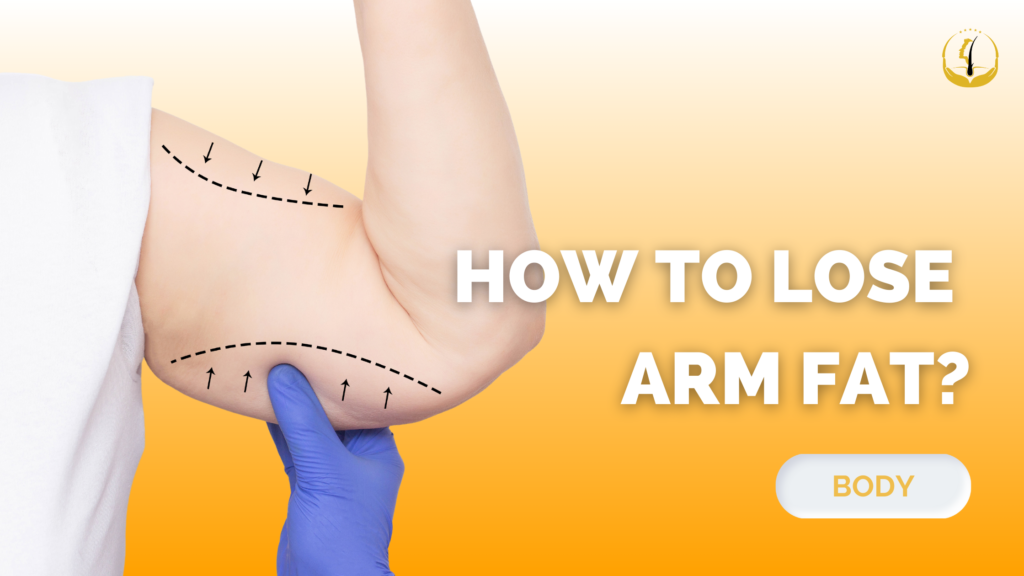
The quest for a toned and sculpted physique has led many individuals to explore innovative approaches to fat reduction. One area that often troubles people is excess fat in the arms, which can be stubborn and resistant to traditional methods like diet and exercise. In recent years, an intriguing solution has emerged – fat transfer. In this blog post, we will delve into the concept of fat transfer as a technique for losing arm fat and achieving more contoured arms. What is Fat Transfer? Fat transfer, also known as fat grafting or lipofilling, is a surgical procedure that involves the removal of fat from one area of the body and its subsequent transfer to another area. While fat transfer is commonly associated with procedures like breast augmentation or facial rejuvenation, it has gained attention for its potential in sculpting other body areas, including the arms. The Fat Transfer Process Consultation: The journey to achieving toned arms through fat transfer begins with a consultation with a board-certified plastic surgeon. During this consultation, the surgeon will evaluate your specific concerns, medical history, and goals. They will discuss whether you are a suitable candidate for the procedure and provide detailed information about what to expect. Liposuction: The first step of the procedure involves liposuction, which is used to harvest excess fat from donor sites such as the abdomen, thighs, or flanks. Liposuction is a minimally invasive procedure that uses a thin tube, called a cannula, to carefully extract fat cells. This step not only reduces unwanted fat from the donor area but also prepares the harvested fat cells for transfer. Purification and Processing: Once the fat is extracted, it undergoes a purification and processing step. This involves separating impurities, fluids, and damaged cells from the healthy fat cells. The purified fat is then ready for transfer. Injection: In the final step, the purified fat cells are carefully injected into the targeted areas of the arms. The surgeon uses precise techniques to ensure an even distribution of the fat, sculpting and contouring the arms to achieve the desired shape. Benefits of Fat Transfer for Arm Fat Reduction Natural Results: Fat transfer offers a natural way to reshape and contour the arms using the body’s own fat cells. This eliminates concerns about artificial implants or foreign substances. Dual Benefit: The procedure not only helps in reducing arm fat but also provides the opportunity to enhance other body areas through liposuction. Minimal Scarring: The incisions made for liposuction are small and typically well-hidden, resulting in minimal scarring compared to traditional surgical methods. Longevity: The transferred fat cells can establish a blood supply in their new location, leading to long-lasting and sustainable results. Customizable: Fat transfer allows for a high level of customization, ensuring that the arms are sculpted to complement your body’s proportions. Post-Procedure Care and Recovery After the fat transfer procedure, it’s important to follow the surgeon’s post-operative instructions diligently. This may include wearing compression garments, avoiding strenuous activities, and maintaining a healthy diet to support healing and optimize results. Fat transfer has emerged as an intriguing option for individuals seeking a more refined arm contour. By harnessing the body’s own fat cells, this procedure offers a natural and sustainable solution for arm fat reduction. As with any surgical procedure, it’s crucial to consult with a qualified plastic surgeon to determine if fat transfer is the right choice for your goals and needs. Remember, achieving toned and sculpted arms is a journey that requires dedication to a healthy lifestyle, and fat transfer can be a valuable tool in your quest for a more confident you. At Glojas, we welcome clients to reach out to us directly to schedule a free initial consultation. We offer guidance and valuable insights on how best to address your specific challenges. Let us assist you in navigating your journey with confidence and clarity.
How to Choose the Perfect Design for Hair Transplant
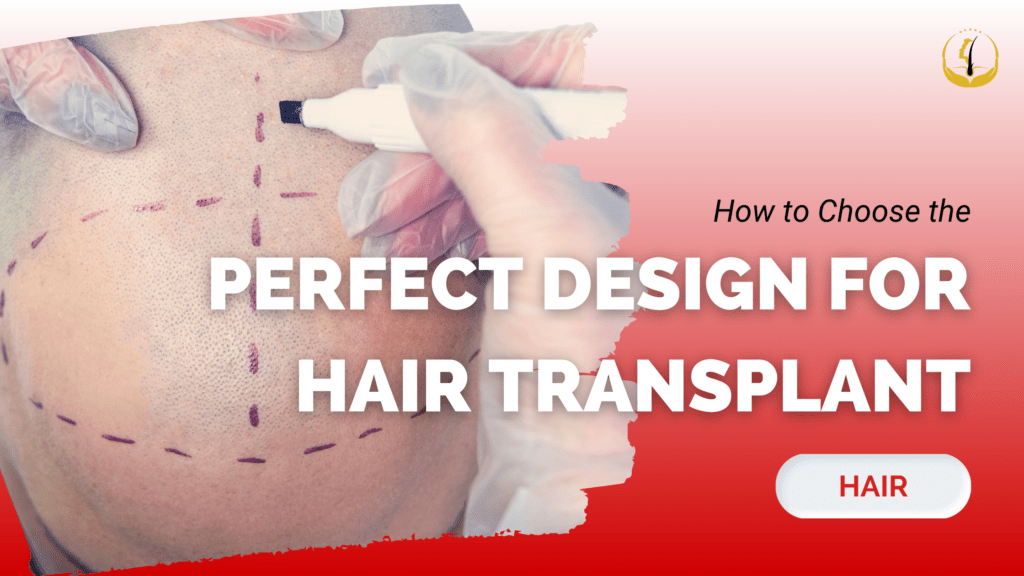
Dealing with hair loss can be emotionally challenging, impacting both confidence and self-esteem. Fortunately, the evolution of medical science has introduced hair transplant procedures as a viable solution for restoring a full head of hair. Among the critical decisions in this journey is choosing the perfect design, a decision influenced by factors such as hairline shape, density, natural growth patterns, and overall aesthetic goals. Research and Consultation Embarking on a hair transplant journey begins with comprehensive research. Gathering information about various transplant techniques, current trends, and the reputation of clinics or surgeons is crucial. Consulting with a skilled and experienced hair transplant surgeon is imperative for personalized recommendations tailored to your unique hair loss pattern, aesthetic preferences, lifestyle, and expectations. Hairline Design for Hair Transplant The hairline is a pivotal aspect of post-transplant appearance, framing the face and influencing overall aesthetics. Achieving a natural-looking hairline involves considering factors like age, gender, and facial symmetry. Surgeons discuss various hairline shapes—rounded, straight, or slightly receded—and work with patients to determine the design that complements individual characteristics for a harmonious and realistic outcome. Donor Hair Distribution Strategically mapping out donor hair distribution is crucial for a balanced and symmetrical appearance. Surgeons consider current hair density, potential future hair loss, and desired coverage when placing hair grafts. An even distribution ensures a uniform look, enhancing the overall aesthetic of the transplant. Natural Hair Growth Patterns Mimicking natural hair growth patterns is essential for a seamless transition between transplanted and existing hair. Surgeons account for the specific angle and curvature of natural hair growth, ensuring the newly transplanted hair blends seamlessly, making it virtually indistinguishable. Personalized Approach Recognizing that each individual’s hair loss journey is unique, a reputable hair transplant surgeon analyzes characteristics like texture, color, and curl. This personalized approach ensures a natural-looking design that complements the individual’s overall appearance. Future Considerations Well-designed hair transplants consider future hair loss patterns. Surgeons address current areas of hair loss while also considering potential future balding areas. This foresight ensures the design remains cohesive as individuals age, maintaining a natural and pleasing appearance for years. Choosing the perfect design for a hair transplant involves a careful blend of research, consultation, and collaboration with an experienced surgeon. A well-designed transplant not only restores hair physically but also contributes to the restoration of confidence, allowing individuals to feel their best selves once again FAQs (Frequently Asked Questions) Q1: Is hair transplant a lasting solution for hair loss? A: Yes, hair transplant provides a permanent solution for hair loss when performed by qualified professionals. Q2: How do I choose the right hair transplant design for my face? A: Consult with an experienced surgeon who will consider factors such as age, gender, and facial symmetry to determine the ideal design. Q3: What is the importance of mimicking natural hair growth patterns? A: Mimicking natural growth patterns ensures a seamless blend between transplanted and existing hair for a natural appearance. Q4: Can a well-designed hair transplant address future hair loss? A: Yes, a skilled surgeon considers potential future balding areas to ensure the design remains cohesive over time. Q5: Why is a personalized approach essential in hair transplant design? A: Each individual’s hair characteristics are unique, requiring a personalized approach to achieve a natural-looking result. Q6: How can I research different hair transplant techniques? A: Research various techniques online, read reviews, and consult with experienced surgeons for insights into the latest trends. Q7: What role does the hairline play in the overall appearance after a transplant? A: The hairline frames the face and significantly influences post-transplant aesthetics, making its design crucial. Q8: Is donor hair distribution important in a hair transplant? A: Yes, strategic mapping of donor hair distribution ensures a balanced and symmetrical appearance for the overall aesthetic. Q9: Can a hair transplant be customized to match my existing hair? A: Yes, a personalized approach considers factors like texture, color, and curl to match the transplant with existing hair. Q10: Why is consultation with a skilled surgeon imperative in a hair transplant journey? A: A skilled surgeon can provide personalized recommendations based on individual hair loss patterns, lifestyle, and aesthetic goals.
Why is My Hair Falling Out?
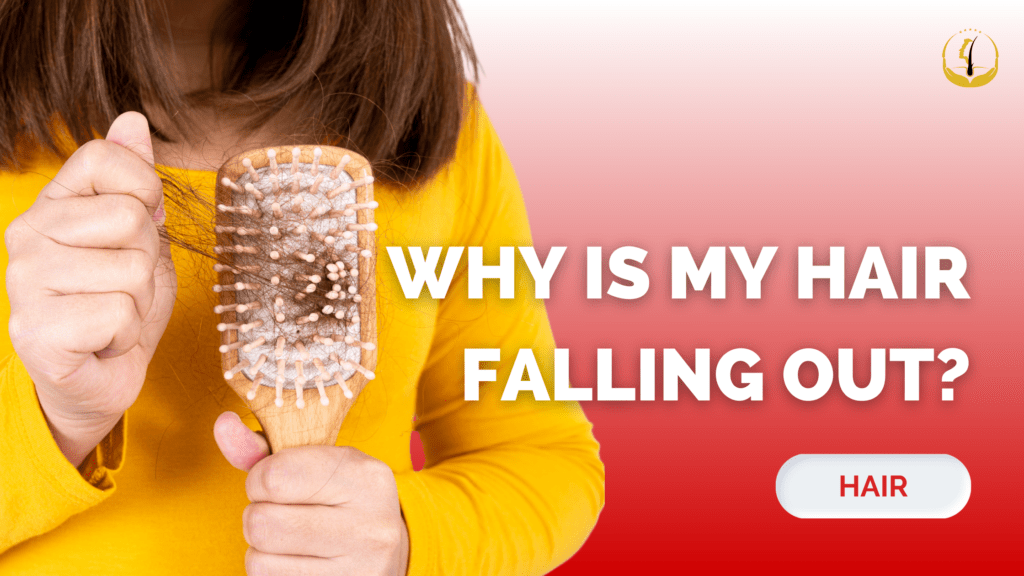
Hair, often considered our crowning glory, becomes a source of concern and distress when it starts Hair falling out. Medically known as alopecia, hair loss is a common issue affecting people of all ages and genders. In this comprehensive guide, we delve into the intricate reasons behind hair loss, exploring the various factors contributing to this phenomenon. Genetics in Hair Fall One of the foremost factors influencing hair loss is genetics. If hair thinning or baldness runs in your family, there’s a higher likelihood you may experience it too. Androgenetic alopecia, known as male-pattern baldness and female-pattern baldness, is a hereditary condition manifesting as early as the late teens or early 20s. Men experience a receding hairline and thinning crown, while women may notice diffuse thinning along the crown of the scalp. Hormones in Hair Fall Hormones play a pivotal role in hair growth and shedding. Imbalances, particularly in dihydrotestosterone (DHT), can lead to hair loss. DHT, a derivative of testosterone, miniaturizes hair follicles, resulting in shorter and finer hair growth cycles. Conditions like polycystic ovary syndrome (PCOS) in women and hormonal changes during pregnancy and menopause contribute to hair loss due to hormonal fluctuations. Stress in Hair Fall Significant stress or trauma can trigger telogen effluvium, a condition where numerous hair follicles enter the resting phase, causing noticeable shedding. While often temporary, managing stress and practicing self-care can mitigate its effects and promote regrowth once the underlying stressor is addressed. Nutritional Deficiencies in Hair Fall A well-balanced diet rich in vitamins, minerals, and proteins is crucial for overall health, including hair health. Nutritional deficiencies prioritize essential functions over hair growth, leading to thinning and shedding. Iron deficiency (anemia), inadequate biotin, zinc, and vitamin D intake can negatively impact hair health. A well-rounded diet and, if necessary, supplements recommended by a healthcare professional can foster healthy hair growth. Medical Conditions and Hair Loss Certain medical conditions contribute to hair loss. Autoimmune diseases like alopecia areata result in the immune system mistakenly attacking hair follicles, causing patchy hair loss. Scalp infections, thyroid disorders, lupus, and chronic illnesses disrupt the normal hair growth cycle. Consulting a healthcare provider is essential for diagnosing and managing underlying medical conditions contributing to hair loss. Hairstyling Practices and Traction Alopecia Excessive hairstyling involving tight hairstyles, extensions, or harsh chemicals can cause traction alopecia. Constant tension weakens hair follicles, leading to eventual loss. Avoiding tight hairstyles and allowing hair to rest, along with gentle care, prevents this form of hair loss. Hair loss is a multifaceted issue influenced by genetics, hormones, lifestyle, and medical conditions. Understanding its causes is the initial step in effective management. For significant hair loss concerns, consulting a dermatologist or healthcare professional is advisable to determine the root cause and create a personalized treatment plan. While complete prevention may not be guaranteed, adopting a healthy lifestyle, managing stress, and practicing gentle hair care contribute to maintaining vibrant and healthy hair.
Does Exilis Kill Fat Cells?
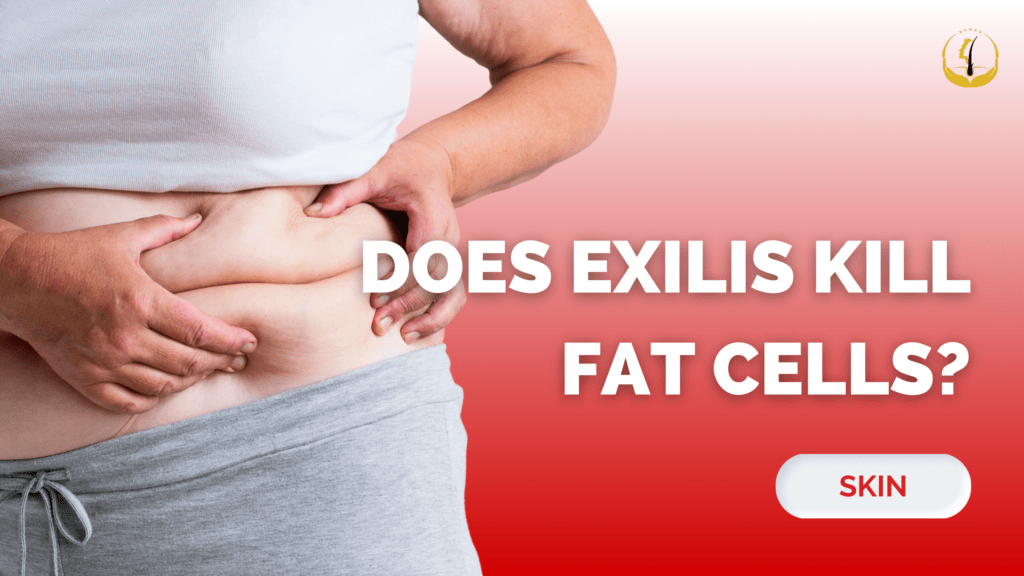
Now, with one device we can contour the body, make the fat layer thinner and heat the skin to affect healing with a tighter skin envelope. There is no other device on the market that does both well. We can tighten the skin of the face and neck, and remove fat around the hips all with a single modality, thanks to the controlled depth of Exilis RF.at GLOJAS. Time for Exilis! Have the visible signs of aging begun to show up in your life and impact the reflection you see? Have years filled with cherished emotions and frequent expressions begun to leave their marks? Is your skin losing the firm tone, texture, and youthful appearance you’ve known and loved? Well thanks to many recent advancements in non-invasive cosmetic medicine, you now have more options than ever when it comes to enhancing your natural appearance, boosting your self-confidence, and renewing the smooth, glowing, radiant look of good health, and younger looking skin. No one wants to live with the signs of aging, not when you don’t have to. There are now many advancements in anti- aging skin treatments, cosmetic enhancements, skin tightening, and skin rejuvenation procedures to help you keep looking your best. Non-invasive skin treatments utilizing Radio Frequency Skin Tightening like Exilis have become some of the popular options to renew your skin’s appearance. Is Exilis right for you? Non Invasive skin treatments are best for those who want to see a mild to moderate improvement in skin tone tightness, and appearance. They are perfect for those who are beginning to see the signs of aging and want to stay ahead of the game looking better for longer. They are also perfect for many of you who have already had more radical procedures or cosmetic surgery and want to preserve the effects to keep looking great for longer. How Exilis Works? The FDA approved radiofrequency device, The Exilis, can tighten skin and reduce fat anywhere on the body. It can dramatically reduce the appearance of cellulite after just a few treatments which last 30 to 60 minutes depending on the number of areas treated. Skin temperature is precisely monitored to ensure safety and efficacy. New 21st century technology allows the radio waves to penetrate deeper than other similar devices on the market. Skin of any color or texture can be successfully treated with no pain or downtime. This appealing monopolar, focused radiofrequency (RF) device provides for precise delivery of thermal energy that can be uniquely tailored to every individual body. Exilis allows you to actually target areas where you need more tightening or more fat reduction. Exilis can also target fat and then tighten skin in the same area, all with a few power and cooling-depth adjustments. These capabilities distinguish Exilis from other monopolar, bi-polar and multipolar RF devices. Still unsure? We suggest that you get a FREE consultation with one of GLOJAS Doctors who are experts in their field to identify the right treatment you need to achieve your goal.
Can I use Hair Products after a Hair Transplant is done?
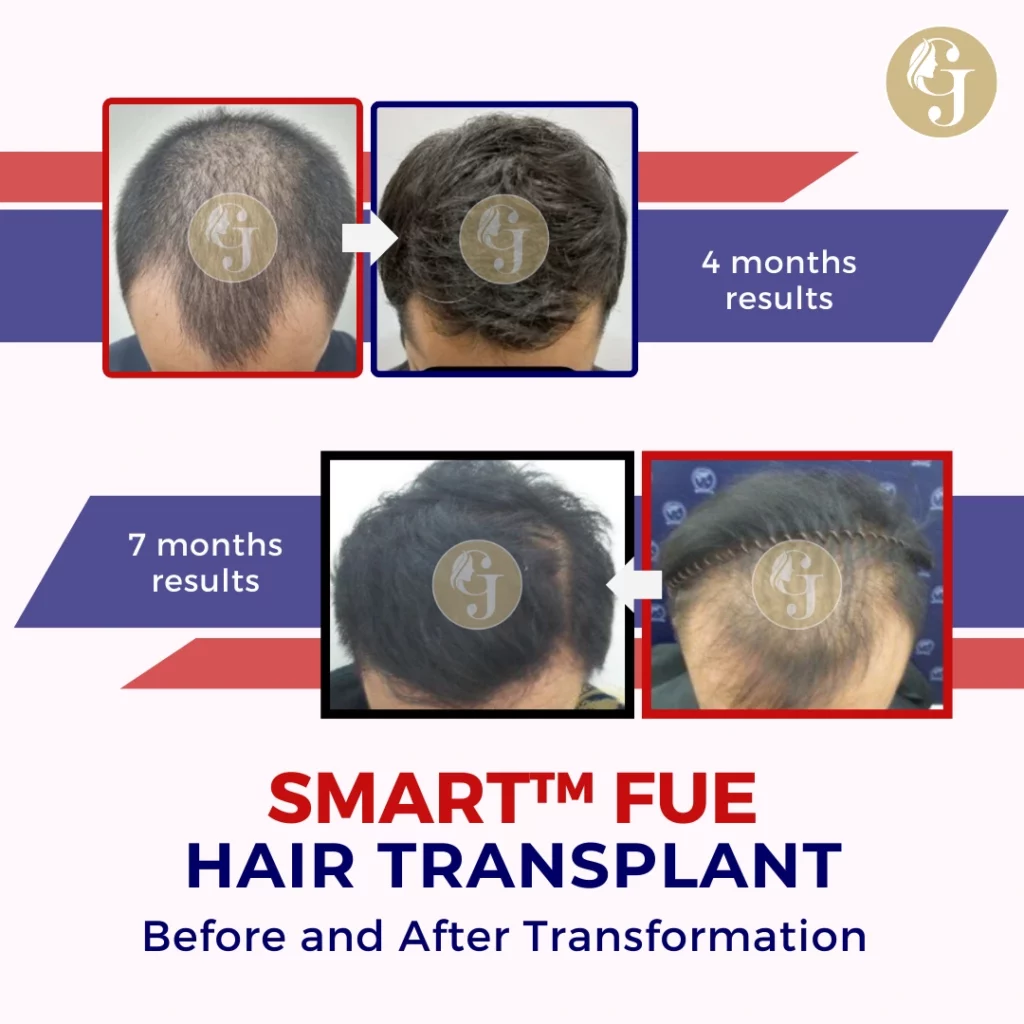
Hair products like gels and sprays can indeed be used after a hair transplant, but timing is crucial. It’s advisable to wait for at least 3 weeks post-treatment. However, the specific time to start using these products should align with your surgeon’s recommendations. Getting A Hair Transplant The journey to a permanent solution for hair loss involves hair transplant surgery. This procedure entails transferring healthy, baldness-resistant hairs from one area to the recipient area. Typically, the donor area comprises the back and sides of the patient’s head, where baldness-resistant hairs grow. The results are permanent if a qualified doctor is chosen, but proper aftercare plays a significant role in determining the final outcome Right After Hair Transplant Achieving positive results after a hair transplant requires proper care during the healing process. Common concerns post-surgery include when to wash and use other hair products. Typically, patients avoid washing their hair for at least 24 hours after the surgery. Maintaining a clean scalp is crucial, and surgeons usually permit hair washing after this initial period. When washing post-surgery, experts recommend using a mild shampoo, preferably a baby shampoo without harsh chemicals. Gentle treatment during washing is essential, as forceful rubbing is discouraged. After washing, pat the hair dry gently with a soft towel. Using a conditioner is subject to consultation with your doctor, who may suggest a mild option compatible with your scalp’s condition. What about hair dyes? Patients are advised to refrain from using hair dyes post-surgery due to potential harsh chemicals that could cause permanent damage. Bleaching is also discouraged. Rapid blow-drying immediately after a hair transplant can lead to scalp damage and negatively impact healing hair follicles. It’s recommended to allow the hair to air dry initially, followed by a careful patting dry with a towel once sufficient healing has occurred. Additionally, hair dryers should be avoided during this phase. FAQs (Frequently Asked Questions) Q1: When can I start using hair products after a hair transplant? A: It’s advisable to wait for at least 3 weeks after the surgery, but the specific timing depends on your surgeon’s recommendations. Q2: Is hair transplant a permanent solution for hair loss? A: Yes, hair transplant surgery offers a permanent solution, provided it is performed by a qualified doctor and followed by proper aftercare. Q3: Can I wash my hair immediately after a hair transplant? A: Patients typically avoid washing their hair for at least 24 hours after the surgery, and scalp cleanliness is essential during this initial period. Q4: What type of shampoo is recommended after a hair transplant? A: Experts recommend using a mild shampoo, preferably a baby shampoo without harsh chemicals, to avoid harm to the treated area. Q5: Is conditioner advisable after a hair transplant? A: Consult with your doctor before using a conditioner. They may suggest a mild option compatible with your scalp’s condition. Q6: Can I use hair dyes post-hair transplant? A: It’s advised to avoid using hair dyes after a hair transplant, as they may contain harsh chemicals that can damage hair permanently. Q7: Is blow-drying allowed after a hair transplant? A: Rapid blow-drying immediately after a hair transplant is discouraged, as it can lead to scalp damage and negatively affect healing hair follicles. Q8: When can I use a hair dryer after a hair transplant? A: Hair dryers should be avoided during the initial healing phase. Allow the hair to air dry initially and then use a soft towel after washing. Q9: What is the significance of proper aftercare in a hair transplant? A: Proper aftercare is crucial for the final outcome of a hair transplant, ensuring positive results and long-term success. Q10: Why is using mild products recommended after a hair transplant? A: Mild products, such as shampoo and conditioner, are recommended to avoid harmful chemicals that could potentially harm the treated area and impede the healing process.
Do Dimples Make You Attractive?

By having dimple creation surgery, you can amazingly enhance your beauty. In Malaysia and even in the rest of the world, dimples are a symbol of beauty and attraction. It’s a cosmetic surgery which is done on an outpatient basis. The best dimple plastic surgeon at GLOJAS can deliver desired results A natural looking and cute dimples can be easily achieved in no time due to technological growth in the cosmetic surgery field. Dimple creation surgery can deliver attractive results that will work wonders in enhancing your beauty. It’s a surgical process done by making a small incision inside the cheek and exactly at the opposite side of the desired location of the dimple. Charming Smile Just by a simple smile, people with dimples can create a charm that’s quite hard to resist. Most of the time, you simply can’t look away because an attraction is created which asks for attention. There are a number of myths related to dimples, so it’s better that you clear these myths before opting for dimple surgery. A Culture In our culture, women having dimples are said to be more adored by their husbands. Though these may or may not be lucky charms, these are signs of authenticity and attractiveness for sure. People simply can’t resist the captivating dimples of movie/TV stars. Entertainment sector has played a crucial role in raising the popularity of dimples among people. With development in the cosmetic surgery industry, it has become possible to acquire natural looking dimples. Recovery This surgical process will give you satisfying results and it is done on an outpatient basis, so youre not required to stay overnight in the clinic. The procedure does not take more than an hour to complete and you can resume your daily routine or lifestyle within a few hours. It’s advisable that you should always check the previous work done by the surgeon you have opted for. Try not to be frugal here because an inexperienced surgeon might ruin your look. GLOJAS clinic provides services of the best cosmetic surgeon. Here, dimples can prove to be a magic trick by helping you to stand out in the crowd. Avoid going to quack surgeons who might mess up your face. At GLOJAS Clinic, we can give you a smile which will surely capture people’s attention.
What To Know Before Rhinoplasty
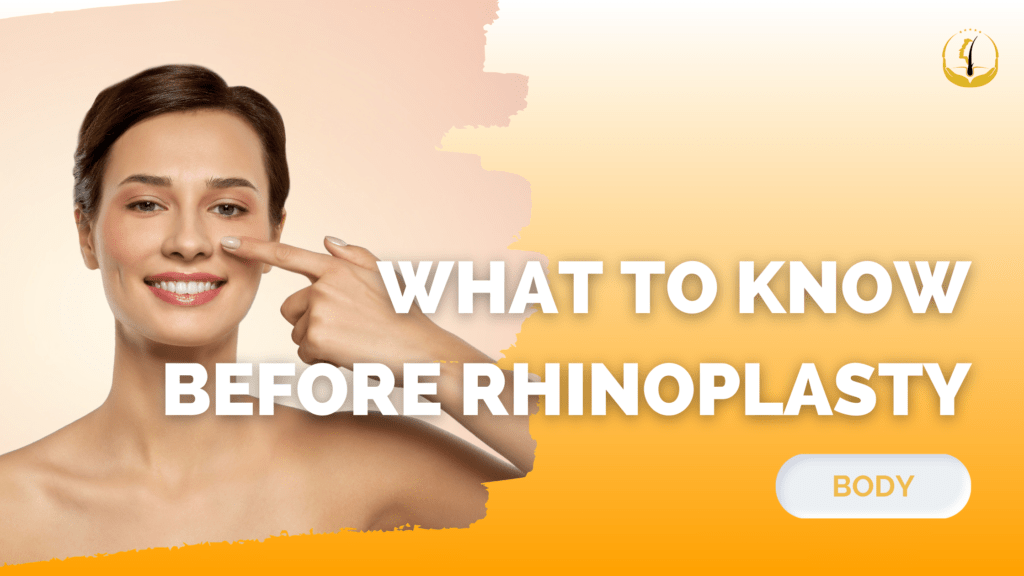
A large number of individuals who are keen on getting Rhinoplasty or want to alter the looks of their nose do not have a fundamental knowledge of the technique, its benefits, limitations, expenses and eligibility criteria. Here are some truths for you to enhance the learning about Rhinoplasty surgery. Functions Of Rhinoplasty Surgery· Rhinoplasty is performed generally for aesthetic reasons, recreation of injured nasal structures, and adjusting nasal structures to cure different types of issues. Rhinoplasty performed for reconstruction purposes turns out to be medicinally obligatory when disfiguration to the nose has happened as a result of a disease, accident, deformity by birth or because of a badly performed cosmetic surgery. How Rhinoplasty Is Performed? Rhinoplasty is done only by an expert surgeon with a closed or open methodology. The closed approach includes making cuts inside the nose while in the open approach cuts will be clearly made on the outside. Both strategies deal with differing conditions. Cuts are made carefully in order to avoid leaving any scarring. If there are any scars, then they will fade away with time. Post Rhinoplasty Advice After the rhinoplasty surgery is performed, the patient will feel irritation, swelling and softness in the nose and in the surrounding skin. The surgeon will give the patient suitable tips, guidance, and prescribed medicines, which incorporate infection preventive antibiotics. Complete bed rest and overall stoppage of routine activities should be followed in the 1st week. After the end of 1st week the stitches will be removed. In the following four weeks the patient will recover really quickly in the event that they follow every single step properly. Relying upon corrections made to the bone, ligament (cartilage) and soft tissue of the nose, complete recovery from the procedure may take between 4-8 months. Rhinoplasty Is A Delicate Surgery Rhinoplasty surgery, also known as a nose job is a delicate procedure that needs to be performed by best cosmetic surgeons who have years of experience and a knowledge in the field of cosmetic surgery with a specific end goal of effectively treating a patient’s cosmetic problem. Due to the changes and association of different components in the entire procedure relying on the patient’s physical well-being, medical history and natural setup, the outcomes can never be ensured even by the best cosmetic surgeons . The most accomplished cosmetic surgeons can offer an ideal estimate and work according to it. Cosmetic surgeons also need to keep different factors in mind in order to deliver the best results to the patients. Curious? We suggest that you get a FREE consultation with one of GLOJAS Doctors who are experts in their field to identify the right treatment you need to achieve your goals.
